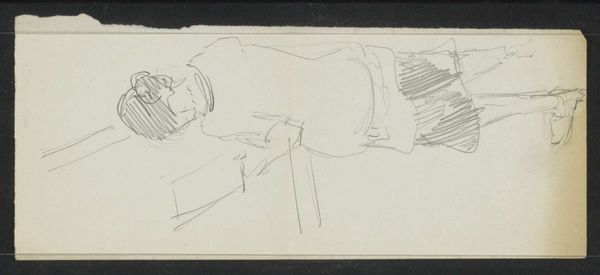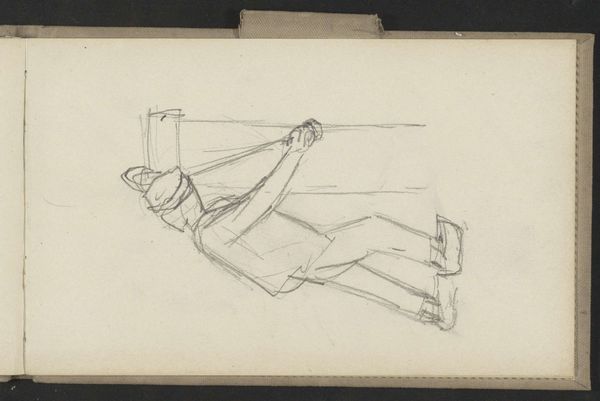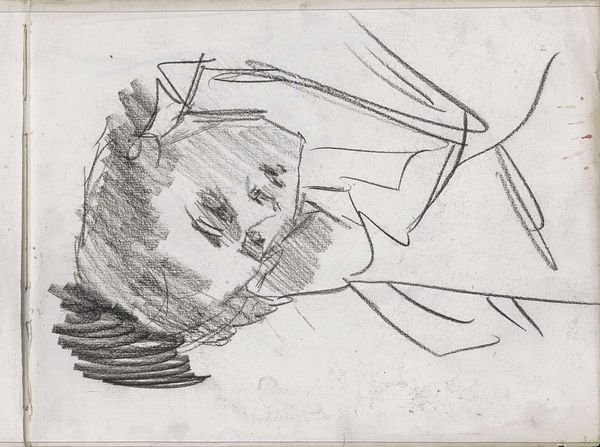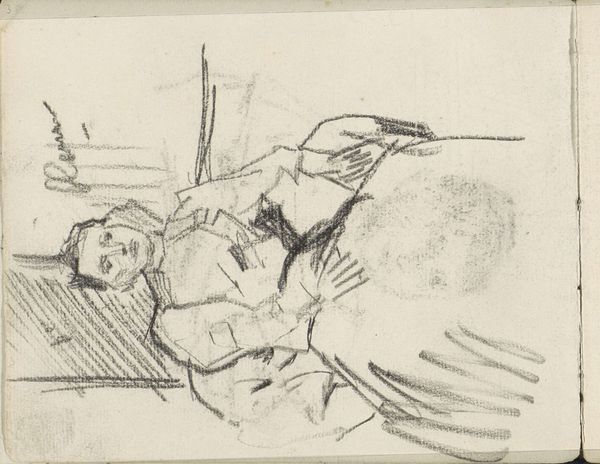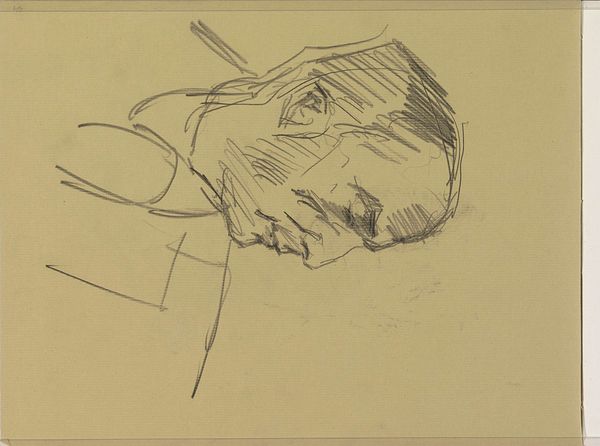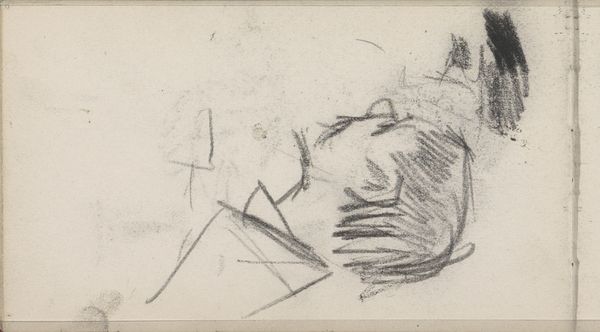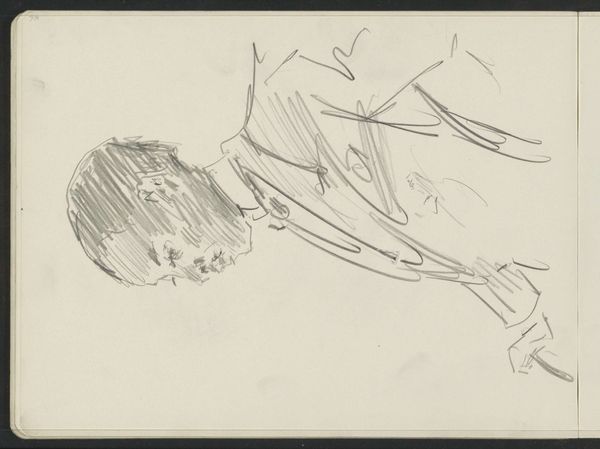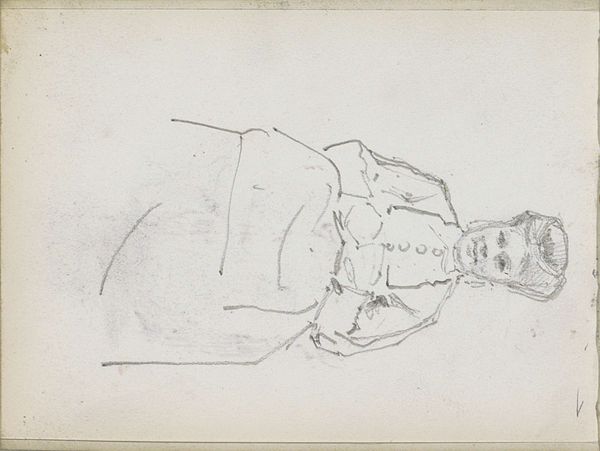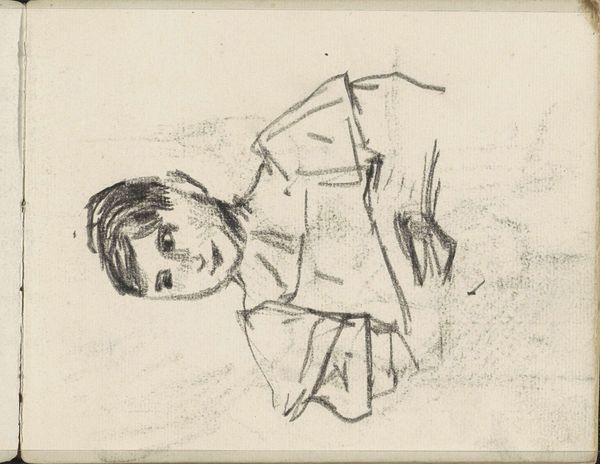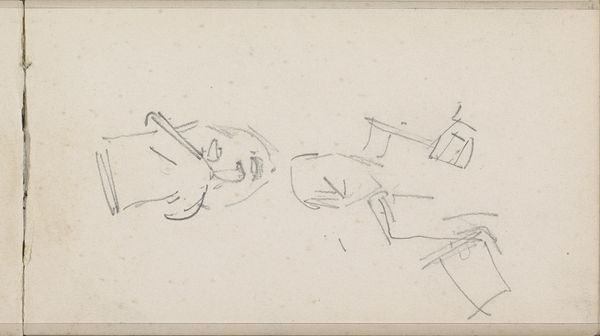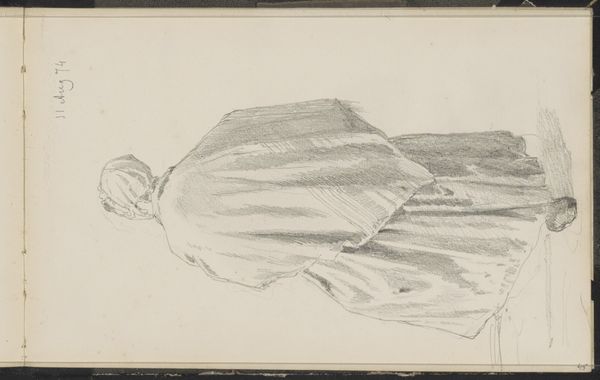
Copyright: Rijks Museum: Open Domain
Curator: Here we have Carel Adolph Lion Cachet's "Vrouw met haar hand op een opengeslagen boek," or "Woman with her hand on an open book," a pencil drawing dating from around 1895 to 1900. It's currently held here at the Rijksmuseum. Editor: Well, my first thought is...peaceful. It’s like a fleeting glimpse of a private moment. I mean, look at that light pencil work—almost ethereal, like a memory fading at the edges. Curator: It's interesting you say that. Cachet’s early work often reflects the introspective mood of the fin de siècle, a period marked by significant shifts in European thought and societal structures. The intimacy you perceive likely stems from the increasing emphasis on individual experience that characterized the era. Editor: True, but doesn’t it also strike you as strangely… voyeuristic? It's a private moment, yes, but we're looking down at her. She's not posing; she’s caught in a pensive act of reading or reflection. The impressionist technique makes it even more... raw. Curator: The bird's-eye perspective certainly disrupts the traditional power dynamic of portraiture, especially during this period. Think about the formal portraits that dominated artistic discourse then, intended to convey status and authority. Cachet subverts that. He’s not interested in idealization; he seems more concerned with capturing the transient moment of thought. This resonates with larger cultural shifts regarding representation and the portrayal of women in art. Editor: Representation indeed! But you know, it makes me think of my grandmother, lost in her books. Did she exist for my benefit at those moments, or was she inhabiting some inner cosmos that I could never touch? This piece is doing all that and more in these minimal lines, questioning not just "who," but also "why are we allowed to see this?" Curator: It's a compelling interpretation! What seems at first like a straightforward portrait is layered with societal considerations about how the act of viewing shapes, or even disrupts, personal narratives. Editor: Yeah, that and the fact that someone immortalized my imaginary grandma! I see a deep thoughtfulness—both in the artist and subject. I like that… Curator: An exercise in intimacy—a subtle yet powerful commentary on the period's changing attitudes toward women, reading, and inner lives—all through the humble medium of pencil on paper.
Comments
No comments
Be the first to comment and join the conversation on the ultimate creative platform.
